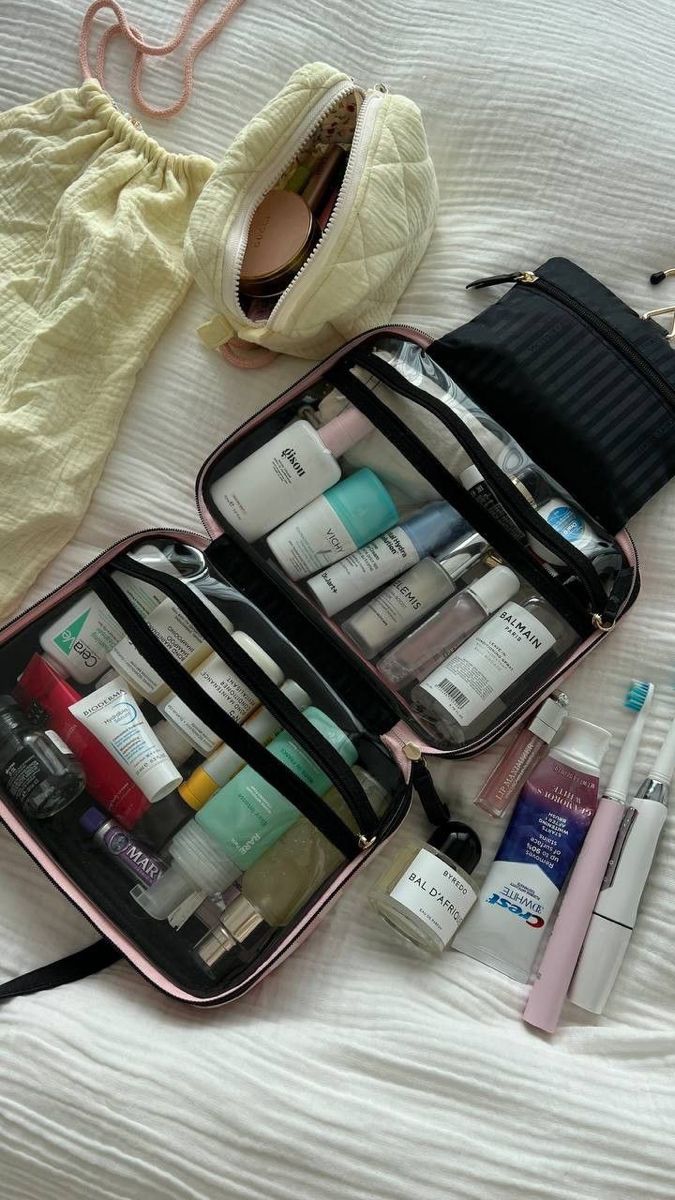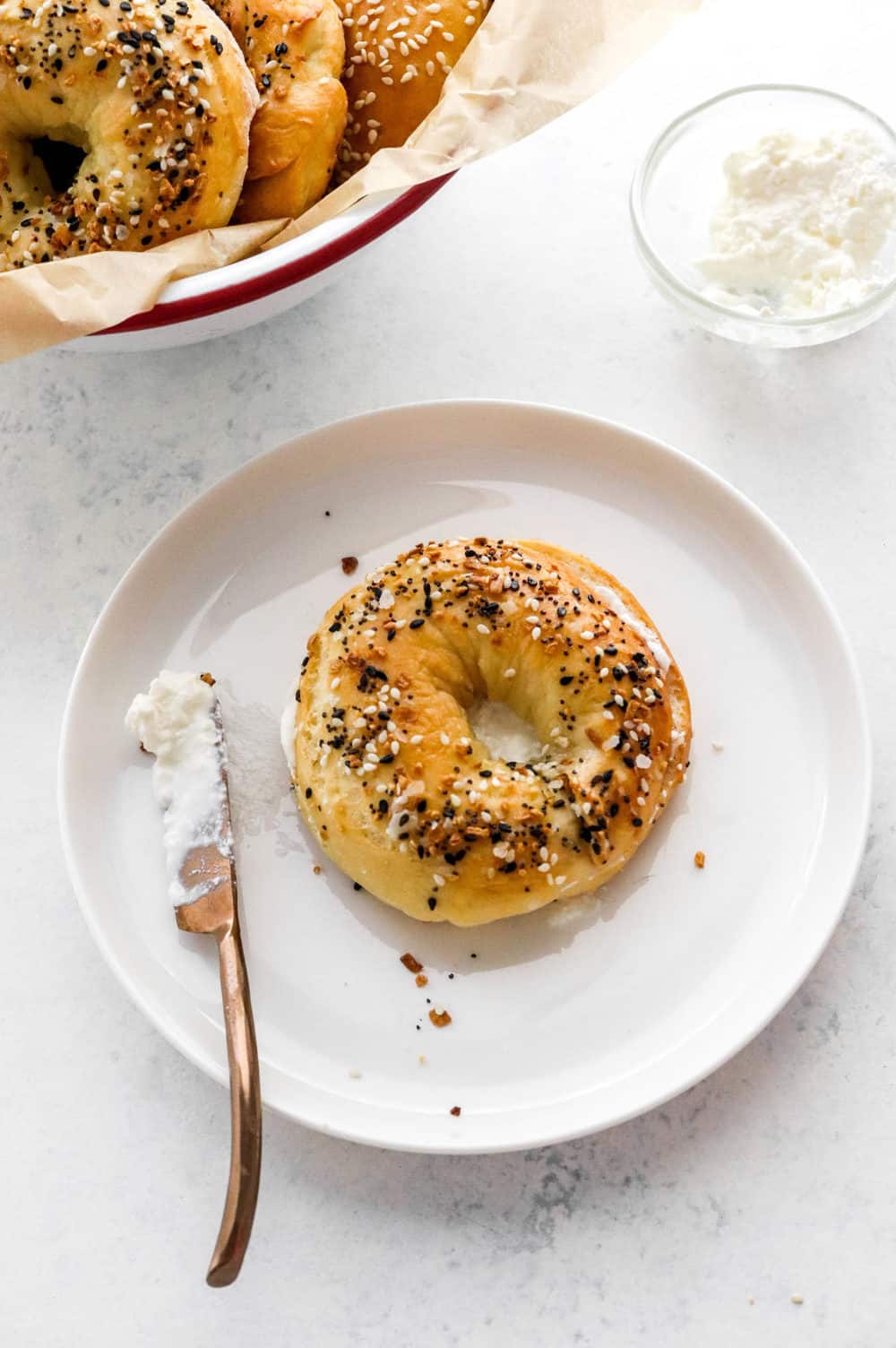I always keep a small bag of essentials in the bottom of my purse, but when traveling, it becomes even more crucial to have a few must-haves on hand—especially if you’re like me and need a chapstick within reach at all times! Whether you’re on a plane, cruise ship, or in a foreign country, you can’t always just stop by a store when something comes up.
To help you stay prepared, here’s a list of toiletries and emergency essentials for your next trip. The goal is to pack everything you might need in the most compact bag possible. You may not need every item, but this list covers a wide range of travel must-haves. I put this together simply by going through the bag I already carry, so you can trust it’s based on real-life experience!
For your convenience, I’ve included links to some of my favorite items, but many of these can be found at home, the dollar store, or Target.
ESSENTIAL TRAVEL BAG MUST-HAVES
Before you start packing, you’ll need a small bag or pouch to keep everything organized. If you already have one, great! If not, I highly recommend these Mesh Zipper Pouches—they come in various sizes and are see-through, making it easy to find what you need. I use them for everything, from organizing passports and electronics to storing paperwork.
ESSENTIALS FOR YOUR TRAVEL BAG
Small tissue pouch
Cough drops
Favorite chapstick (because you can never have too many)
Bandages & alcohol wipes – I love Welly brand bandages; they’re both cute and high-quality. Handy for little ones and adults alike!
Folding brush/comb
Aquaphor Healing Balm Stick – This is a multitasking lifesaver! It works as chapstick, lotion, diaper rash relief, and even for minor burns or dry skin. A must-have.
Antacids
Pen – Perfect for travel forms, notes, or when you can never seem to find one in your purse.
Travel-size ibuprofen – You can buy these in convenient single-dose packets. I keep them in my purse, car, and emergency kits—so handy!
Acetaminophen – Have you ever tried Goody’s Extra Strength Headache Powder? These dissolvable packets contain caffeine for fast relief (just note they also have aspirin).
Nail file – Because nothing else can replace it when you need one!
Flossers – Ever had something stuck in your teeth at a restaurant? These are lifesavers. A small travel case of Plackers is perfect.
Tampons, pads, liners, or a menstrual cup
Extra cash – Small bills for vending machines, tips, or emergencies.
Extra hair tie & bobby pins
Disposable face mask – While not always required, it’s good to have one just in case.
Pepto Bismol Chewables – Trying new foods is part of the adventure, but if your stomach disagrees, these are great to have. They treat multiple symptoms and pack flat.
Dramamine – If you get motion sickness (like I do!), this is a must for car rides, cruises, or even sitting on a dock.
Hand sanitizer gel or wipes

OPTIONAL ADD-ONS FOR EXTRA CONVENIENCE
Travel-size deodorant or Lume invisible cream
Travel-size makeup for quick touch-ups
Small folding fan
Glasses cleaning wipes – For fellow glasses wearers, these are a must.
Neutrogena Makeup Remover Wipes – Single-use packs are perfect for freshening up on international flights.
Children’s chewable medications – If you’re traveling with little ones.
Oil blotting sheets – I found these bamboo charcoal oil blotting sheets—super effective, and a single pack comes with 600 sheets!
Safety pin, paperclip, rubber band – Tiny but useful in unexpected situations.
Travel-size sewing kit
Compact mirror
Wisp mini toothbrush – No water needed, perfect for freshening up on the go.
Gum or mints
Shout Wipes or Tide to Go Stick – For inevitable spills.
Mini scissors
CUSTOMIZE IT TO FIT YOUR NEEDS!
The best part about putting together your own travel essentials bag is that you can tailor it to what you need most. If there’s something you use regularly, try to find a travel-size version to save space.
This would also make a fantastic gift for a high school or college student heading back to school! A cute bag filled with both essentials and fun accessories would be both practical and thoughtful.
What are you adding to your travel emergency bag?





